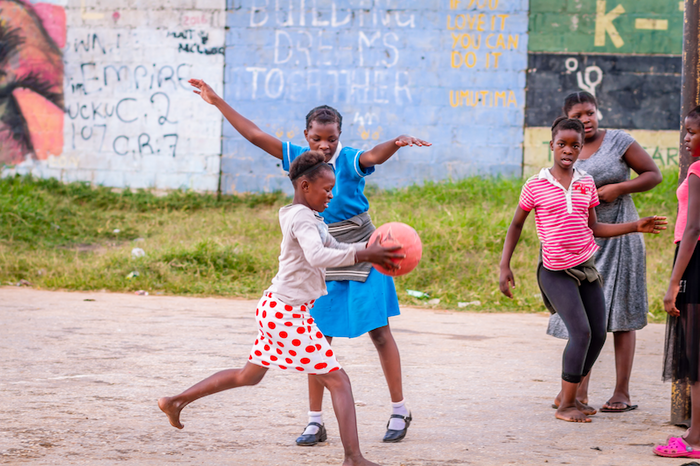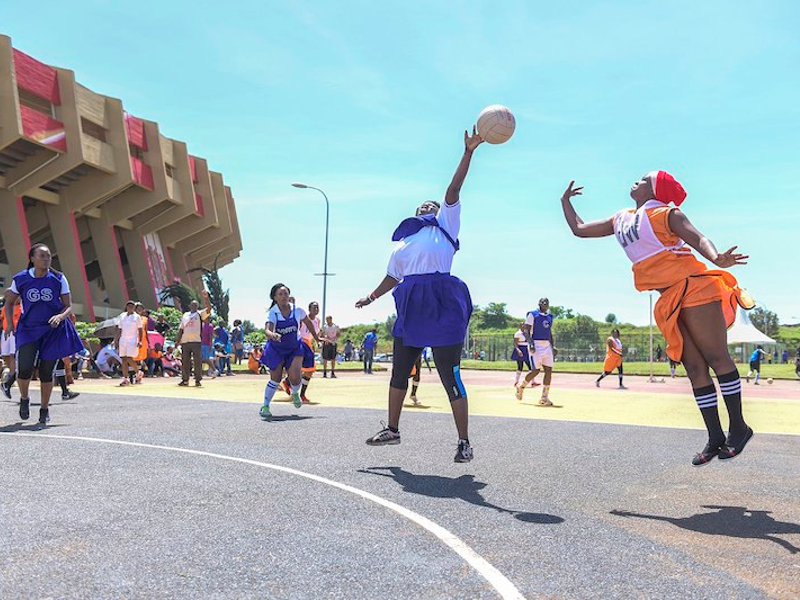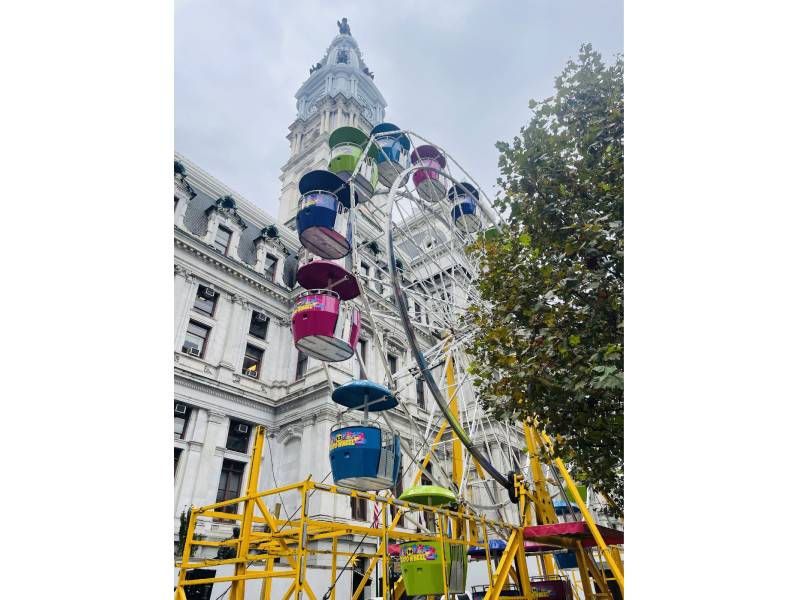Women playing netball. Source: Wikimedia Commons
Netball had become established in South Africa by 1917, much later than other sports that originated in the 1800s. South Africa, however, had a visible presence in the early years of codifying netball for international competition.
The president of the all-white South African Women’s Netball Association, established in 1951, represented South Africa at the inaugural International Netball Conference in London in 1957. The country was also part of the second Conference of Netball and Australasian Basketball Countries in Sri Lanka in 1960, where a set of international rules was framed.
South African netball history writers have all but ignored netball experiences in Black communities in South Africa, however, the 2023 Netball World Cup tournament, hosted by South Africa in Cape Town, provides an opportunity to correct this.
As a scholar of sport history, with a focus on marginalized communities, I conducted a study on this untold history of netball in Black communities in the Western Cape province of South Africa. It’s important that these stories be told to understand the role of sport in Black life in a racially divided South Africa.
A South African photograph displays a netball picture taken as early as 1905. Initially netball in South Africa was played in schools, not club structures. According to records from the Cape Town Teachers’ Training College, netball was played there by 1917. By then this was an all-white institution. Newspaper accounts reveal that the game was occasionally played in Black school communities after the first world war, which ended in 1918.
By the 1930s and 1940s all Black teacher training colleges in and around Cape Town had netball teams. Zonnebloem College recorded a match in 1932 and Wesley College in 1933. In 1936, the Athlone Institute in Paarl held netball games against Battswood College. In 1941, a report was found of an inter-class netball tournament at Söhnge College in the rural town of Worcester. The same year, St Augustine’s College in Parow registered a netball team in a club competition. Media reports mention matches between these colleges and schools in faraway villages such as Genadendal and Malmesbury. Matches were also played between colleges and staff from Somerset Hospital in Cape Town.
Most Black children received their early education in mission or church schools. These schools received less funding than public schools, which were in most cases White-only institutions. The establishment of the Central Schools Sports Union in 1928 marked the spread of organized school sport in Cape Town within the confines of communities designated as colored. The union promoted athletics, cricket, rugby, soccer and netball in these mission schools, teacher training colleges and the two public high schools set aside for colored children. Some teacher training colleges registered two senior netball teams. By 1935 the Northern Schools Sports Union was established, with a netball convener. It provided netball opportunities for children in mission schools in the northern areas of Cape Town.

Image: Girls playing netball. Source: Wikimedia Commons
The township of Langa was officially established in 1927 for people classified “native”. It was situated “in healthy … idyllic surroundings next to Cape Town’s sewage works”. A Langa Bantu School Athletics Association was formed in 1938 and provided athletics, netball, rugby and soccer for primary school children. This association did not participate in the activities of the other two unions. A high school had been established and although rugby was “the pride and joy of the high school, netball was also played”.
In 1939 the Athlone and District School Sports Union was established and provided sport for schools in the Athlone area and adjacent districts. Athlone was then a rural area, inhabited largely by colored people. Girls were provided with athletics, netball and tennikoit – a mini version of tennis played with wooden bats.
A Western Province School Sports Board was established in 1946 to promote school sports, including netball, among schools designated colored. Unlike elite White schools, these were poorly resourced mission schools with sparse archival records. This board extended its netball program over a vast area spanning the Western Cape. Netball officials from the board were actively involved in other sport codes and areas of social activity. A case in point is Ray Carlier, a school principal from Livingstone High, who played and later held executive positions in netball, table tennis and tennis federations.
Schools aside, there’s also a huge reservoir of Black netball club history in Cape Town. In 1939 the Wynberg Netball Union was established. Given the novelty of netball compared to male games, it was a huge organization. The initial affiliates included Livingstone High School, Wesley College, Battswood College, Broad Road Primary School and the Temperance Club (which participated in three age divisions). These affiliates had entered, in 1940, two teams each in a league competition and Livingstone had three. Over the years many clubs played in this union and by 1966, the multiple units were playing in four divisions.
The evidence shows that netball played an important part in the cultural life of Black communities in Cape Town. It also became part of the institutional culture of schools and colleges in these communities.
Netball was a glue holding together Black communities. Erasing this history is a historical injustice to these communities. It also denies those Black players who would have been eligible for national selection, were it not for apartheid policies, the recognition they deserve.
Given the fact that many South African township schools today have no sport facilities and opportunities – unlike those in middle-and-upper-class environments – an institutional history of netball could revitalize an interest in the game among working class communities. It might allow all South Africans the opportunity to perform at the highest level – the Netball World Cup.





